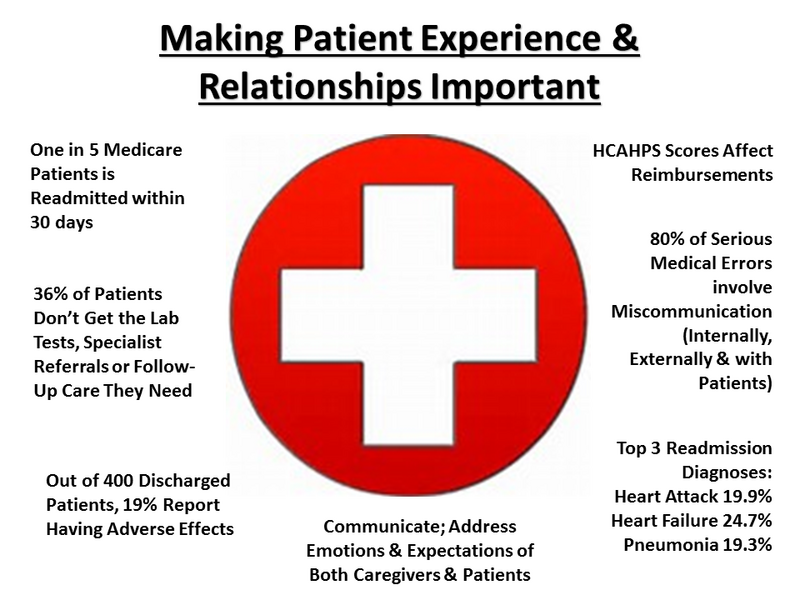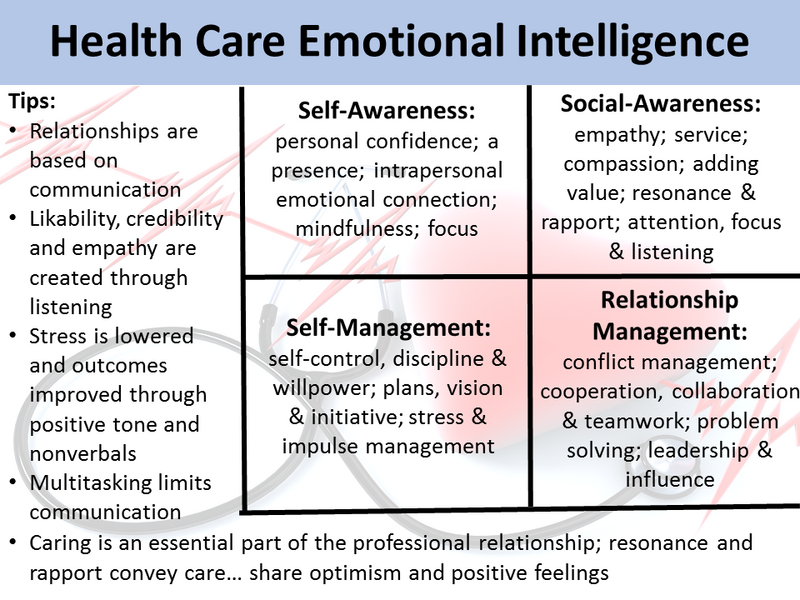ATD Blog
Putting “Care” Back in Healthcare
Thu Aug 03 2017

Typically, when people start their careers in a “caring” profession, they have a strong dedication to serve and are focused on providing the best patient attention. In many cases, though, the administrative demands and the pressures of everyday work lead to the need for fast-paced diagnosis and minimal real patient connection.
As the population ages and the need for healthcare services rise, the demand for high-quality experiences also increases. Of course, this requires the highest levels of professionalism, as well as rapport and resonance with patients. But for most people, connecting with healthcare is stressful. See the figure below for some major factors affecting healthcare.

Clearly, the patient experience needs to as positive, beneficial, and effective as possible. Here’s the good news: soft skills and emotional intelligence of care givers can generate major dividends for healthcare institutions—and better health for the populations they serve.
The 7 “Rs” of Emotional Readiness & Responsiveness
Creating a positive, quality patient experience and relationships is all about emotional resonance and rapport. To be able to connect with the whole patient, readiness requires seven essential behaviors:
Reflection: Be aware, deliberate, and empathetic to provide the highest possible level of quality.
Respect: Connect with patients with politeness, dignity, and a positive attitude.
Resonance: Listen to patients so you can understand their needs and exhibit emotion and empathy.
Rapport: Communicate at a high level. This means choosing your words deliberately and carefully, and generating effective verbal and nonverbal cues.
Always be clear and articulate when you ask and answer questions so you can better educate and empower patients and family members.
Regard: Exercise care with the patient's experience. To do so, you will need to be focused, attentive, and considerate.
Relevance: Provide state of the art professionalism and quality. Use best practices, and continuously make them better.
Resilience: Refresh, renew, and re-energize yourself continuously. While you operate with care, compassion, consideration, and concern, also be sure to keep an eye on maintaining your own mental strength.
A Culture of Emotional Intelligence—and Excellence
With these Rs as a foundation, your teamwork and commitment to quality will certainly generate a climate of organizational excellence that patients want. But commitment to excellence requires a consistent, pervasive culture of care. Here are 10 ways to improve the culture, behaviors, and ultimately the patient experience:
Show respect, care, and concern by listening and empathizing. Be available and patient.
Communicate effectively. Make conversations two-way between patient and caregivers, and use verbal and nonverbal cues.
Value the patient. Validate and address their worries, and be respectful of their time and concerns.
Manage expectations. Be prepared to explain, educate, empower and partner.
Deal with the whole person: mental, emotional, and physical.
Be professional: exercise self-awareness and self-management.
Stay focused and be present in the moment. You will need to do one thing at a time (and do it well), and set an appropriate pace.
Set the tone for relationships. Treat people, not the illness.
Be open and honest. Act with integrity, in accordance with the highest standards.
Commit to continuous learning and improvement.
Putting It All Together
Emotions connect with emotions. The feelings of caregivers have a critical impact on the recovery and emotional wellbeing of the patients. Indeed, emotional intelligence at all levels generates organizational, team, and individual excellence. What’s more, it creates the quality that patients need and deserve. See the figure below for some key factors of emotional intelligence in healthcare.

Bottom line: Emotional intelligence is the cornerstone of this success, and it needs to be a core set of skills taught and retaught. This is best achieved through coaching, training, and development. So how is your organization doing at deploying coaching and emotional intelligence at all levels? Are empathy and feelings simply given lip service or are they real cornerstone values?
To learn how to create a dynamic, best practice system and culture that fosters emotional intelligence, join me September 15 for the webcast Emotionally Smart Healthcare.
You've Reached ATD Member-only Content
Become an ATD member to continue
Already a member?Sign In
